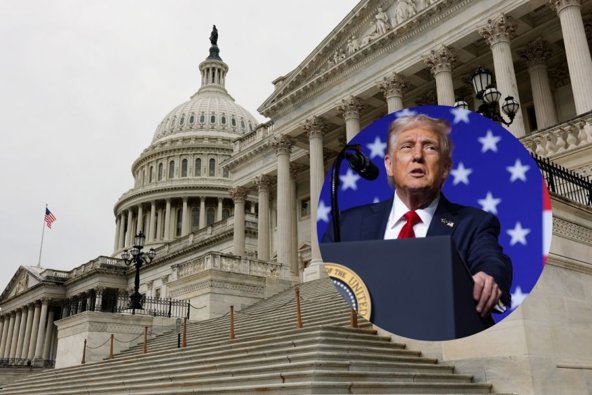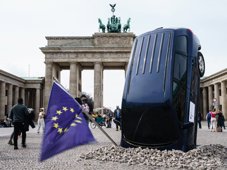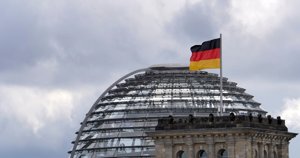
Trump Threatens Federal Layoffs Amid US Shutdown
Trump is using the U.S. budget impasse to threaten sweeping federal job cuts and freeze funding to Democratic stronghold states.
As Washington enters a partial government shutdown, President Donald Trump is framing the impasse as leverage to shrink parts of the federal workforce and curb programs favored by Democrats. The White House has moved to freeze billions in previously approved spending for Democratic-led states while warning of broader cuts if the standoff drags on. Analysts say each week of shutdown could shave 0.1–0.2 percentage point from growth, with delayed data releases complicating the Federal Reserve’s view of the economy.
What Trump said—and why it matters
In remarks and social-media posts during the run-up to the funding lapse, Trump threatened to expand his purge of the federal workforce if the government closed, telling reporters, “We’ll be laying off a lot of people. They’re going to be Democrats.” Reuters reported the warning alongside a failed Senate vote to keep the government open, noting the White House’s posture to cancel programs associated with Democratic priorities. The administration has characterized the fight as a clash over “Democrat agencies” and policies.
The immediate trigger for the shutdown was a Senate stalemate over a stopgap bill: Democrats insisted any temporary funding also include additional health-care subsidies; Republicans argued that issue should be handled separately. The divide ensured agencies would halt “non-essential” operations while essential workers remain on duty without pay until Congress acts.
A targeted funding freeze hits Democratic strongholds
As part of a wider push to squeeze programs associated with Democratic priorities during the shutdown, the administration froze about $26 billion directed largely to Democratic-led states—$18 billion for New York transit projects and $8 billion for green-energy initiatives across 16 states, including California. Democratic leaders Chuck Schumer and Hakeem Jeffries blasted the freeze as punitive; some Republicans also warned it could complicate efforts to end the impasse.
Separately, the Department of Energy canceled $7.56 billion in clean-energy awards, including support for hydrogen hubs—one of which carried a $1.2 billion commitment for California. California Governor Gavin Newsom denounced the move as political; Energy Secretary Chris Wright defended the cancellations as protecting taxpayers and prioritizing reliability.
Who is affected right now?
Early estimates put roughly 750,000 federal workers on unpaid furlough, with many others working without pay in “essential” roles such as law enforcement, air-traffic control, and border operations. Agency shutdown plans note delays or suspension of scientific research, customer-service functions, and certain environmental cleanups. Airlines have warned of slower operations; the Labor Department has flagged interruptions to key labor-market releases.
The White House argues that the shutdown will inflict wide-ranging costs on households and public services, citing potential GDP losses and service disruptions for programs like WIC, Head Start, and airport operations if the standoff persists. A memo from the Council of Economic Advisers pegs the near-term GDP hit at $15 billion per week in lost output, alongside tens of thousands of potential job losses if the shutdown ran a month.
The economics: growth drag and a data blackout
Independent forecasters broadly agree the shutdown’s impact scales with duration. S&P Global Ratings and Oxford Economics each estimate the hit to growth at roughly 0.1–0.2 percentage point per week for a partial shutdown, underscoring rising risks if the dispute stretches through the quarter. A longer episode would compound the drag, and a prolonged data blackout would complicate monetary-policy decisions.
Financial-market reaction has been measured so far. Fitch said the shutdown is unlikely to affect the sovereign rating in the near term, though prolonged disruptions would add uncertainty. However, analysts warn that delayed releases—such as the monthly jobs report—cloud the Federal Reserve’s ability to calibrate rates just as investors search for signals on the policy path.
Inside the West Wing: the players driving the strategy
Press Secretary Karoline Leavitt has served as the administration’s chief messenger on the standoff, delivering briefings that label the impasse a “Democrat shutdown.” Her position and briefings are documented on the White House’s official channels. Russell Vought, the president’s budget director, is central to the austerity push; he previously led the Office of Management and Budget during Trump’s first term and has been associated with the conservative “Project 2025” agenda.
Democrats say the layoffs rhetoric is political theater designed to force concessions on health care and climate initiatives. Progressive policy groups counter that large-scale firings during or after a shutdown would face legal and administrative hurdles. (The administration has already faced litigation from federal-employee unions over workforce reductions.)
What exactly is being cut or paused?
Transit and infrastructure: New York’s planned transit projects face a standstill as $18 billion in federal funds are frozen. State and city officials say halts could ripple into contractor layoffs and higher future costs should projects need to be rebid. The administration argues many awards were wasteful or poorly structured.
Clean energy: DOE cancellations affect hundreds of awards tied to hydrogen, renewables, and grid projects in 16 states. Supporters warn that backtracking undermines investment certainty; the agency says projects failed cost-benefit thresholds or lacked adequate taxpayer protections.
Data and services: The shutdown disrupts the production of official statistics and slows federal lending and permitting, creating knock-on effects for small businesses, transportation, and research. Markets lose visibility into employment and inflation trends until operations resume.
The politics: brinkmanship with high stakes
At the core of the Senate standoff is whether a short-term funding bill should also extend enhanced health-care subsidies that are set to lapse at year-end. Democrats insist on tying those subsidies to any stopgap to avoid sudden premium spikes for millions; Republicans say Democrats are using a must-pass bill to entrench domestic policy and demand a “clean” temporary extension. The House, controlled by Republicans, would still need to approve any Senate deal.
Trump’s decision to pair the shutdown with a targeted freeze advances two objectives: pressuring Democratic leaders in New York and California while signaling to his base that he is rolling back climate and transit spending. That framing may energize supporters ahead of the 2026 midterms, though it also risks backlash if local disruptions—delayed commutes, stalled construction, and lost clean-energy jobs—become more visible.
Legal room to maneuver—and its limits
While presidents have latitude to pause or redirect certain discretionary funds, wholesale cancelations and mass layoffs can trigger statutory and contractual challenges. Unions have already moved to block agency-level reductions; courts have, at times, allowed some firings to proceed while litigation unfolds. Meanwhile, the Impoundment Control Act limits a president’s ability to withhold money Congress has appropriated, setting up potential clashes if agencies refuse to obligate funds after the shutdown.
Budget officials can reprogram or delay spending within certain boundaries, particularly when contracts haven’t been executed. But the broader the freeze, the more likely it is to draw lawsuits from states, cities, contractors, and beneficiaries claiming breach or unlawful impoundment. Those risks will weigh on how far the administration pushes beyond temporary holds.
What happens next? Three scenarios to watch
- Fast compromise with limited collateral damage. A short-lived shutdown (days rather than weeks) would minimize the GDP hit and allow agencies to restart data releases quickly. In this scenario, any layoffs rhetoric remains mostly performative, with freezes lifted as part of a deal that decouples health-care subsidies for separate debate.
- Rolling short-term extensions with targeted cuts. Congress could pass a brief continuing resolution that still leaves discretionary programs vulnerable to executive-branch pauses. That would perpetuate uncertainty for transit and clean-energy projects, potentially chilling private co-investment even after funds resume.
- Prolonged standoff and deeper retrenchment. As weeks turn into a month or more, the growth drag compounds; a quarter-long shutdown could subtract more than a full percentage point from GDP, Oxford Economics estimates. With leverage from a prolonged closure, the administration could attempt more lasting workforce reductions and program cancellations—inviting more lawsuits and market volatility.
Why is the layoffs threat significant if furloughs are already happening?
Furloughs are temporary and tied to the shutdown. Trump’s statements signal possible permanent reductions targeted at parts of the civil service he labels “Democrat.” That would mark a structural shift in federal employment rather than a cyclical pause.
Which programs are most exposed to freezes?
The administration has focused on transit (notably New York) and clean-energy funding, arguing these fail cost-benefit tests or reflect a “left climate agenda.” States and project sponsors dispute that characterization and say freezes jeopardize jobs and infrastructure.
How big is the macro hit?
Baseline estimates cluster around 0.1–0.2 percentage point of GDP per week for a partial shutdown. The impact escalates with duration and the breadth of paused services. A prolonged data blackout also clouds Fed policy decisions.
What evidence is there that the freeze is politically targeted?
The freeze concentrates on funds flowing to Democratic-led states such as New York and California, and senior Democrats have criticized it as “political blackmail.” The White House frames it as fiscal discipline and alignment with administration priorities.
Who is shaping the administration’s approach?
Press Secretary Karoline Leavitt is the public face of the message; OMB Director Russell Vought is central to the budget strategy and has been linked to blueprints for reshaping the administrative state.
Bottom line
Trump is using the shutdown not only as a pressure point on Capitol Hill but also as a vehicle to reset federal priorities—testing the limits of executive power over spending flows and the civil service. Whether this strategy yields policy concessions or a prolonged stalemate will depend on how quickly Congress can break the impasse on health-care subsidies and whether courts step in to referee the fight over freezes and firings. In the meantime, halted projects, furloughs, and delayed data releases add friction to an economy already navigating a murky outlook.
Sources: The White House S&P Global Center for American Progress Reuters






